- Qinghai -
Qinghai is one of the important province on China's Qinghai-Tibet Plateau. The Chinese name "Qinghai" is after Qinghai Lake, the largest lake in China. Located in the northwest region in China, Qinghai borders on Gansu , Sichaun , Tibet and Xinjiang provinces. It is the source of Chinese two largest rivers Yangtze River and Yellow River; and it is also the birthplace of the Lancang River. It is known as the "source of rivers" and "Chinese water tower".Qinghai is world-renown because of the Qinghai-Tibet Railway, Qinghai-Tibet Road, the southern route of Silk Road, and the Tang-Tibet Ancient Road as well as the Marco Polo Line. They all go through here.
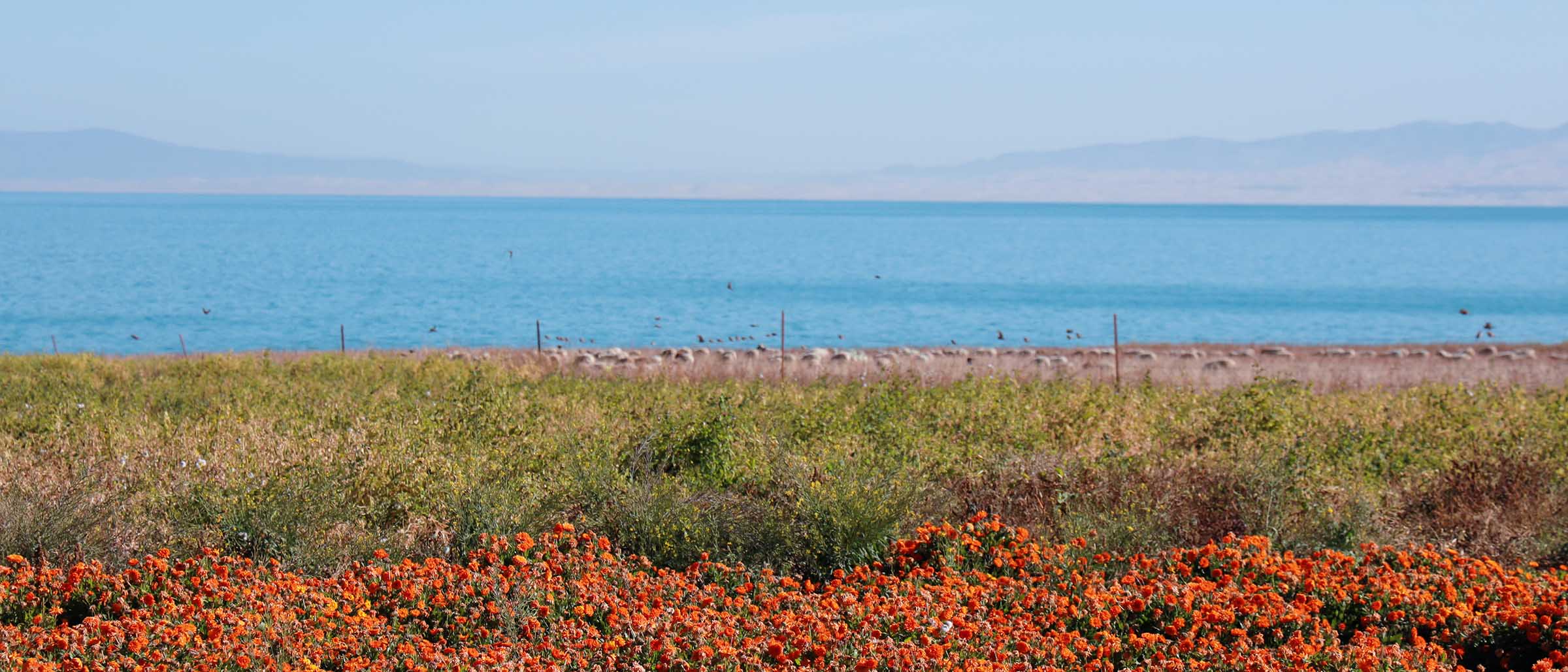
Basic Information
Chinese Name: 青海(Qing Hai)
Location: Qinghai borders Gansu on the northeast, Xinjiang on the northwest, Sichuan on the southeast and the Tibet Autonomous Region on the southwest.
Provincial Capital: Xining
Area: 720thousand square kilometers, Qinghai is the largest province in the People's Republic of China (excluding the autonomous regions).
Population: The total population of Qinghai is 5.78 million.
Average Altitude: 3,000 meters.
Major Ethnic Groups: Zhuang, Hui, Mongolian
Famous City: Xining, Delingha, Golmud.
Qinghai Geography
Qinghai is located on the northeastern part of the Tibetan Plateau. The Yellow River originates in the southern part of the province, while the Yangtze and Mekong have their sources in the southwestern part. Qinghai is separated by the Riyue Mountain into pastoral and agricultural zones in the west and east.
By area, Qinghai is the largest province in the People's Republic of China. Qinghai Lake is the largest salt water lake in China, and the second largest in the world. The Qaidam basin lies in the northwest part of the province. About a third of this resource rich basin is desert. The basin has an altitude between 3000 and 3500 meters.
The Sanjiangyuan National Nature Reserve, is located in Qinghai and contains the headwaters of the Yellow River, Yangtze River, and Mekong River. The reserve was established to protect the headwaters of these three rivers and consists of 18 subareas, each containing three zones which are managed with differing degrees of strictness.
Qinghai Climate
The average elevation of Qinghai is over 3,000 metres above sea level.Mountain ranges include the Tanggula Mountains and Kunlun Mountains, with the highest point being Bukadaban Feng at 6,860 metres. Qinghai forms a distinctive plateau continental climate because of the interactions of the factors, such as, its elevation, its terrain, its latitude, its geographic location, atmospheric circulation, etc. It is long but not cold in winter, short and cool in summer, and four seasons change obscurely. Its mean annual temperature is approximately −5 to 8 °C, with January temperatures ranging from −18 to −7 °C and July temperatures ranging from 15 to 21 °C . It is also prone to heavy winds as well as sandstorms from February to April. Significant rainfall occurs mainly in summer, while precipitation is very low in winter and spring, and is generally low enough to keep much of the province semi-arid or arid.
Tourism Resources
Located on the northeastern part of the Tibetan Plateau, Qinghai is a province in China surrounded by Gansu Province on the north and east, Xinjiang Province on the west, Tibet on the south and Sichuan on the southeast. It is named after Qinghai Lake, the largest saltwater lake in China.
Qinghai now has 11 world-class scenic spots, 79 national-level spots, as well as hundreds of provincial-level scenic spots. More than 400 tourism resources have developing prospects, and quite a lot of them can be describe as China’s, and even world’s, greatest attraction. The most representative landscapes such as Qinghai Lake, the Three River source Region, the Qilian Mountain grassland, the clear Yellow River, as well as the Kunlun Mountains Culture, the Kumbum Monastery, Liu Wan’s Colorfully Painted Pottery, and local ethnic custom parks allow one to appreciate the Tibetan, Mongolian ans Salar folk culture, etc.
Qinghai is relatively unknown to foreign travelers. This huge area is home to many Tibetan monasteries, vast grasslands, the headwaters of the three of Asia largest rivers - the Yellow River, the Yangtze River and Mekong River. It also boasts of a mosaic of ethnic groups, including Tibetan, Mongols, Tu, Goloks and Hui with a vibrant religious life.
For foreign travelers, Qinghai is one of the frontiers of adventure travel in China, a springboard for China' wildest travel for Lhasa by rail, Yushu by road, Gansu and Labrang Monastery by road, and further westward the ancient silk road to Xinjiang.
Qinghai Culture and Religion
Located mostly on the Tibetan Plateau, the province has long been a melting pot for a number of ethnic groups including the Han, Tibetans, Hui, Tu, Mongols and Salars. Tibetans constitute a fifth of the population of Qinghai and the Hui compose roughly a sixth of the population. There are over 37 recognized ethnic groups among Qinghai's population of 5.2 million, with national minorities making up a total of 45.5% of the population.The predominant religions in Qinghai are Chinese folk religions(including Taoist traditions and Confucianism) and Chinese Buddhism among the Han-Chinese. The large Tibetan population practices Tibetan schools of Buddhism or traditional Tibetan Bön religion, while the Hui-Chinese practice Islam. It is also a culturally intersection place where diversified cultures join together; including the Yangtze River, the Yellow River, the Indian civilization, the Islamic civilization, along with some ancient Greek culture and ancient Roman culture, which all originated here.
Qinghai Cuisine
Qinghai attracts tourists from all over the world, not only for its spectacular landscapes but also for its distinctive food culture. Each cuisine contains rich ethic specialties. People crave a gourmet month- watering snack.
Qinghai is one of the four major pastoral regions in China. Every herdsman here is a skillful cook. They specialize in cooking beef and mutton with a great look and taste. It is one of the traditional local delicious. Qinghai’s special drink, Tianpei-Sweet fermented barley, is made of highland barley with a sweet and refreshing taste which is quite similar to fermented glutinous rice wine. Gamianpian Noodles is a typical food for common Qinghai household. It can comes with or without soup. Stewing or boiling or stir-frieing, each cooking method turns out an unique taste.
There are also other kinds of delicious snakes like Fazi ( raft-shaped sausage), Naipi( a kind of cheese), Sanzi(fried noodle), Mashi(Pasta in soup), Assorted nuts and fruits, Niangpi (thin wheaten sheet), Steamed Beef Rendon, Braised Lamb Meat and so on.
Folk Festivals
Nadam Fair
Nadam means “entertainment” or “games” in Mongolian language. Nadam Fair is a Mongolian annual traditional festival, especially popular in Inner Mongolia, Gansu, Qinghai and Xinjiang. It contains traditional but popular Mongolian sports, such as wresting, horse racing, archery contests, Bulu racing, lassoing horses and Mongolian chess. In some places, some competitive events such as track and field events, tug-of-war, volleyball and basketball matches are also held. During the grand fair, people enjoy performances of martial arts, polo, archery on horseback, swordsmanship on horseback, a horse-walking race, as well as a motorcycle race. In the horse-walking event, the participating horses are all well trained and their four hooves are not allowed to leave the ground at the same time during the race. Nadam Fair is held every year in July and August, when there are rich rainfall, lush grasslands, flourishing livestock, fine weather and fresh air.
Corban Festival
Corban means “sacrifice”, and is a major Islamic rite to show obedience and faith to Allah. Corban Festival, or Eid al Adha, is one of the major Islamic festivals celebrated by Muslims in Qinghai. It is also called the Loyalty and Filial Piety Festival among Chinese Muslims. Corban Festival falls on the 10th day of the 12th month in the Islamic calendar, and is the last day of pilgrimage activities. On that day, Muslims speaking Chinese, Turkish and other languages gather at mosques in splendid attire to celebrate the festival. After the ceremony, people in good financial condition will butcher a cow or sheep and split the meat into three parts: one for the poor, one for relatives and one for themselves.
Horse Racing Festival
Horse-racing is a major sport in Qinghai, and is very popular in Beishan (Ledu County), which is part of Xunhua, and pasturing areas across and province. There are two kinds of horse races: one judges the rider for his speed and footwork skill while the other judges the rider only for speed. To win the race, the rider must be good at selecting, raising and training his horse, last but not least, the horse-racing, which is the climax of the whole event. Some spectators will present colorful silk scarfs, called Hada or Khata, to the winner, and friends, relatives and female family members will hang embroidered bags on the horse’s mane. The winning horse is colorfully decorated with the largest number of embroidered bags.
Hua’er Festival
On the sixth day of the sixth lunar month, people across Qinghai celebrate this colorful event, and the one held in the scenic area of Laoye Mountain in Datong, 36 kilometers away from Xining, the capital of Qinghai Province, is the most famous. That day, people gather on the mountain to sing “Hua’er” songs (folk songs of love in Qinghai) in groups divided by ages. Singing “Hua’er” songs is a way for local people to express their love and the Hua’er Festival offers them an opportunity to find love, express love and sing love songs. Many good folk singers stand out in the singing contests.
Huangnan Tibetan Prefecture
Huangnan Tibetan Autonomous Prefecture is an autonomous prefecture of Qinghai Province in China. It is also located in the first bend of the Yellow River with nine bends. Huangnan is named so because it lies in the south of the Yellow River. Huangnan prefecture enjoys long history of national religion and culture. It has rich ethnic folklore and abundant resources of humanistic tourism.
The prefecture has area of 17,921 km². The prefecture is subdivided into 5 county-level divisions: Tongren, Jianzha, Zeku and Henan Mongol Autonomous County . Its seat is located at Longwu Town, Tongren County, which is 181 kilometers away from Xining, the capital city of Qinghai.
Before the Western Han Dynasty (206BC-24AD) conquered it in 61BC, Huangnan region was inhabited by the Qiang people, an ancient tribe in western China. One year after the subjection, Heguan County was established there. It was once the domain of Tubo regime in Tibet during the Tang Dynasty (618-907). Huangnan Tibetan Autonomous Prefecture was established in 1955.
Huangnan lies in the plateau area in southern Qinghai. With the Maixiu Mountain in the center as a limit, the south region of Huangnan is simple and haploid in geology. The terrain slopes gently to the north and the east and there are vast grassland distributed, while the northern part is precipitous with many high mountains, gorges and mesas between mountains.
Huangnan is abundant in natural resources and historical heritage, Which makes this land one of a tourism places in Qinghai. The most famous attraction is the Kampula National Forest Park, which features by its unique and gorgeous mountain scenery, caves, beautiful lakes and steep Cliffs. Other places include Longwu Monastery, Rishi Inscription Wall, Sacred Lake and Fairy Hole and some other natural scenic spots. Huangnan is a prefecture worthy of a tour in Qinghai Province. If you are going to travel in Qinghai, savoring the natural wonders and local custom in Huangnan will surely add great fun to your tour.
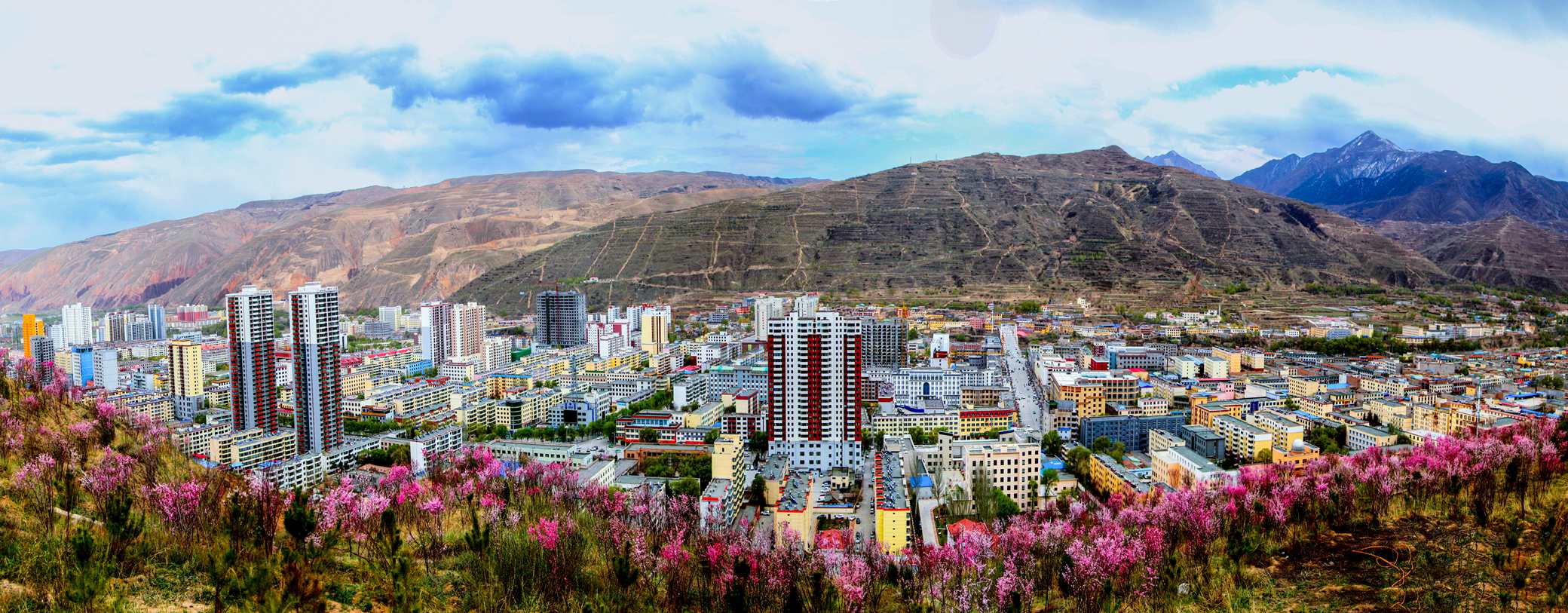
Main cities of Huangnan
Tongren County
Tongren sits on the edge of the Tibetan plateau ,181 kilometers from the city of Xining, capital of Qinghai Province, Tongren Prefecture has a population of 80,000 and covers an area of 3,275 square meters.
This region was historically known to its nomadic inhabitants as Amdo. The towns origins stretch back several hundred years when it emerged around the establishment of the Longwu Monastery.
Tongren Old Town is the one of the oldest and best-preserved ancient towns in Qinghai Province. Over six ethnic groups, including Han , Hui, Tibet, Sala, Dongxiang and Bao live in the old town. Buildings in the old town are simple in style and they were constructed according to the rise and fall of the terrain, which forms a tiered building complex. Three temples: Longwu Temple, Yuantong Temple, and the Mosque, which represent Tibetan Buddhism, Han Buddhism and Muslim, are located on the same street. Their harmonious coexistence goes a long way towards proving the blending and unification of different ethnic groups and cultures can be successful, which constitutes a very rare geo-cultural phenomenon.
Tongren is the birth place of the Regong art. Each year, in the sixth month according to the Tibetan calendar, the Tibetan, Tu and Mongolian ethnic groups from the surrounding villages will gather in Tongren for the June Singing and Dancing Festival, which is referred to as "Zhou lei Bei Rou" by the local dialect. In the event, a lot of cultural activities are presented.
Famous for thangkas and painted statues, the Regong Art has attracted visitors from all over the world.
The monasteries are noted producers of Tibetan art. The beautiful thangkas — Buddhist paintings — produced here are among the most famous in the world. It is the art of painting, sewing, firing a religious image on a support in general of fabric. This work must then be consecrated by a lama.
The city itself is a large village, mainly Tibetan, where the vast Longwusi monastery dating from the Yuan (13th and 14th century) is located.In the surroundings you can also visit the Wutunsi Monastery which features several halls dedicated to the deities and a superb stupas decorated with multiple colorful statues.

Jianzha County
Jianzha County is a county in Huangnan Tibetan Autonomous Prefecture in Qinghai Province, China, to Tibetans in the area known as Malho Prefecture, part of Amdo.
The most famous attraction is the Kampula National Forest Park, which is also a geo park famous for 18 peculiar peaks and natural scenic spots. At an elevation of 2,000 to 3,000 m, it is located in the joint of Qinghai Tibetan Plateau and Loess Plateau and is feature by its unique and gorgeous mountain scenery, caves, beautiful lakes and steep Cliffs.
Jianzha County has deep religious culture and is the birthplace of Tibetan Buddhism. Nanzong Monastery, Nan Monastery and Nanzongza Monastery are important tourist attractions in Qinghai after Ta'er Monastery and Qinghai Lake.
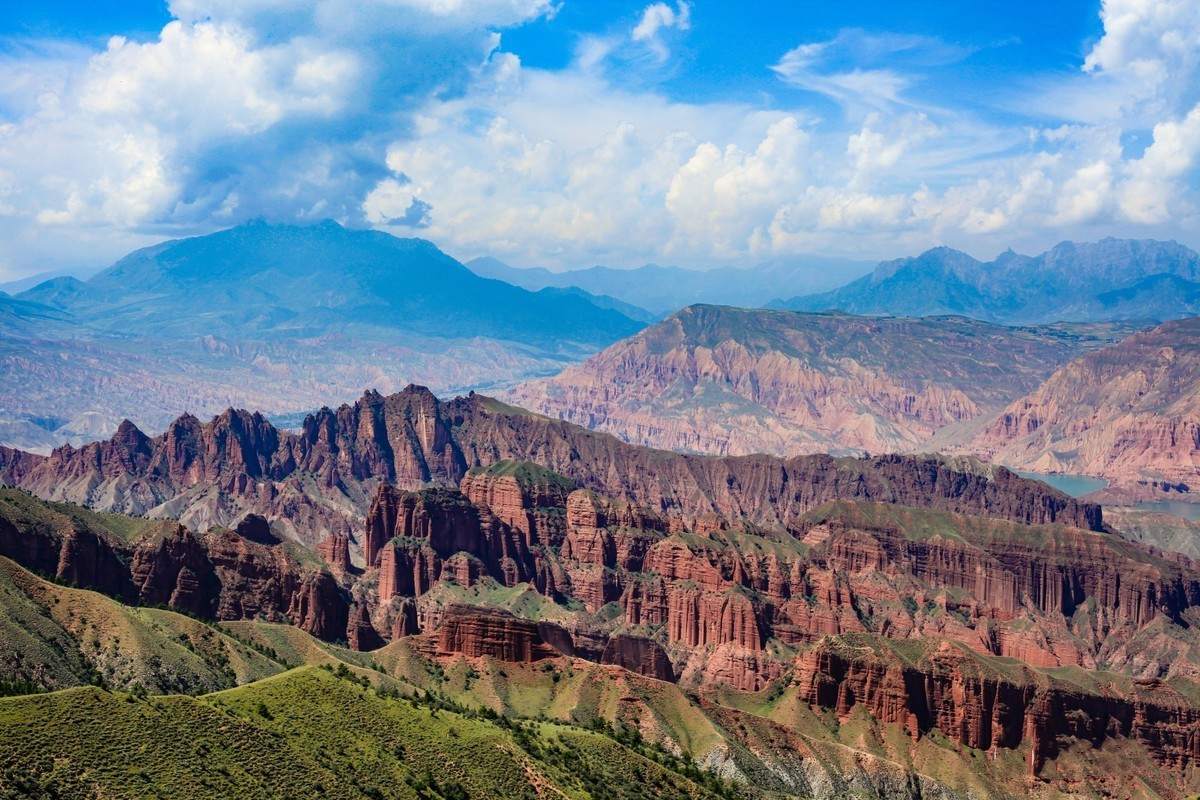
Monlam Prayer Festival
The Monlam Prayer Festival holds in many Tibetan monasteries across Tibetan Plateau, but the Rebkong or Tongren county in Qinghai Province and Labrang or Xiahe in Gansu Proince in the Amdo region of Tibet are the two most most famous Molam Festival among all.
The Monlam prayer festival is actually almost a two week event. The festival starts on the fourth day of the Tibetan calendar and ends of the fifteenth day that is the day called the Butter Lamp Festival (Choe-nga Choepa) that is the greatest and last day of the Monlam Festival. So one long festival season that lasts for fifteen days starts on the 1st day of the Tibetan year that is the Tibetan New Year Festival called Losar and ends on the 15th day on the night of the full moon called the Butter Lamp Festival. During the Monlam Festival, Buddhists pray and commemorate the miracles Buddha did about 2,500 years ago in India.
Monlam means “wish-path” – the Buddhist path of helping others through the prayers. The Monlam Chenmo commemorates the Buddha’s enlightenment or fully awakening from ignorance. All the prayers are being sent to sentient beings in six realms (human realm, animal realm, hungry ghosts realms, hell real, demi-god realm, and god realm).
Monlam Chenmo was established in 1409 by lama Tsongkhapa, the great philosopher and founder of Gelug tradition of Tibetan Buddhism. The first festival was held in Jokhang in Lhasa, where thousands of monks gathered together for chanting prayers and performing religious rituals, such as Buddhist dances (cham), torma offering, giant thangka unveiling, etc.
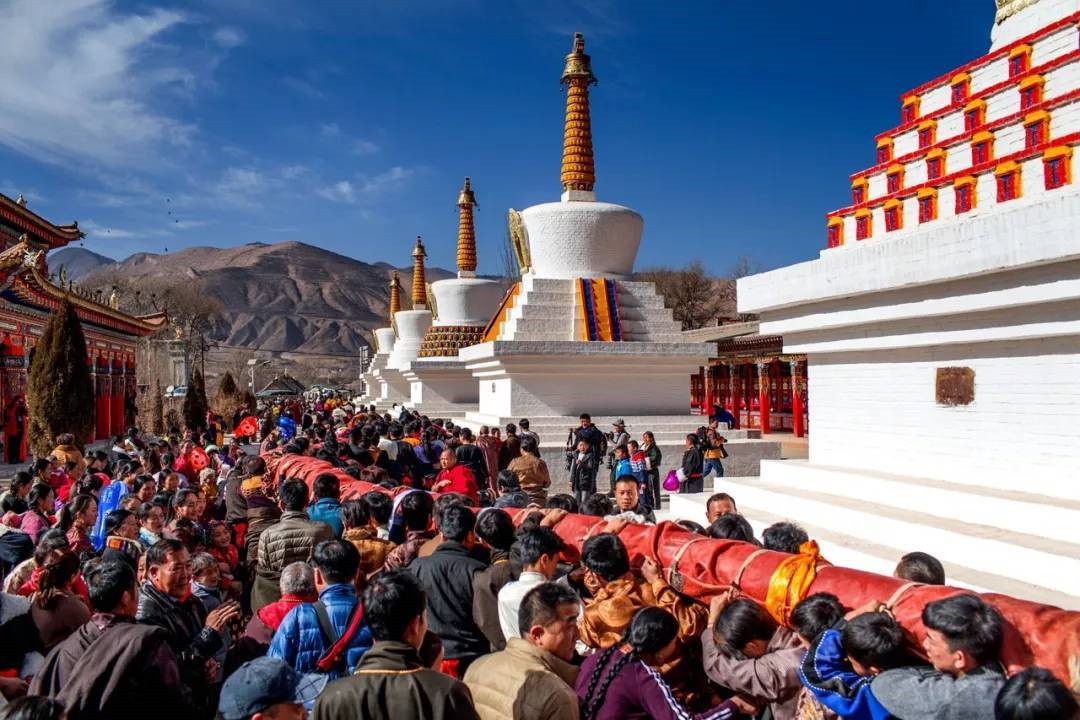
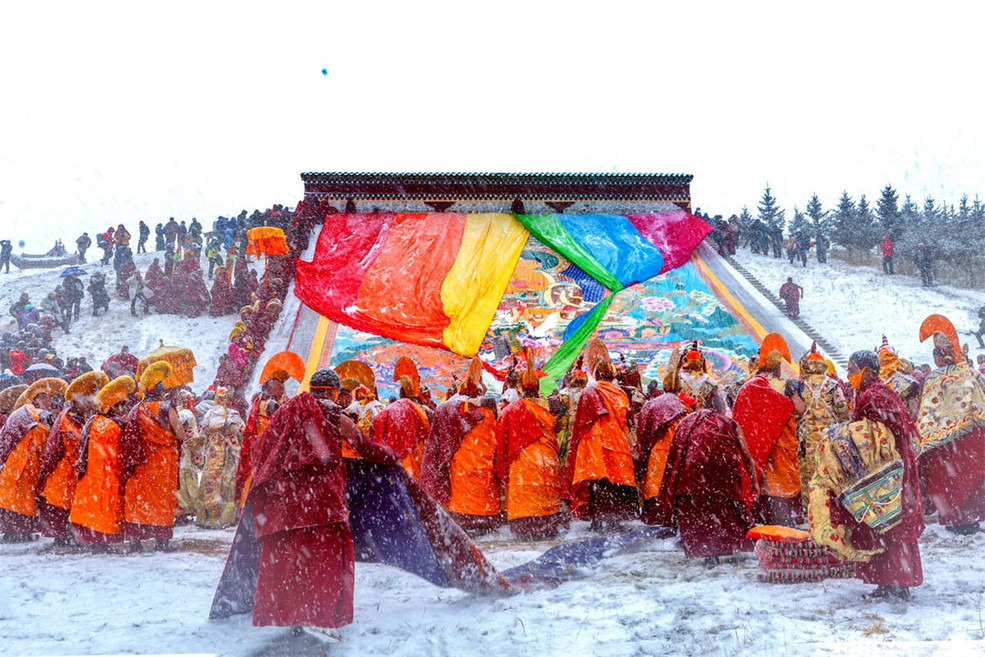
- $1198.00
- 9D8N DAYS
01. Monlam Festival (or The Great Prayer Festival) is the grandest religious festival in Tibet, the 10-Day Amdo Tibetan Monlam Festival tour offers you an opportunity to attend festival events with thousands of local Tibetan nomads, you can …
Read More
- $948.00
- 7D6N DAYS
1. Kanbula National Park: Gazing out across some of the most sublime mountain and river panoramas in the land, Stunning landscapes of Danxia Red Peaks and forest, lakes, Tibetan pastures, valley and monasteries on the peaks.2. Qinghai Lake :…
Read More